Vegan Egg Substitutes: Guide for Easy Swaps
Embracing a vegan lifestyle doesn’t mean you have to miss out on your favorite recipes that traditionally require eggs. With a plethora of alternatives available, vegan egg substitutes serve various purposes in cooking and baking, providing similar effects without compromising taste or texture. This comprehensive guide will equip you with valuable knowledge on a wide array of vegan egg substitutes, their benefits, and when to use them in different scenarios, ranging from fluffy pancakes to savory quiches.
Understanding Vegan Egg Substitutes
Baking Substitutes
- Applesauce: Applesauce is a popular vegan substitute for eggs that provides moisture to the recipe. To replace one egg, use 1/4 cup of unsweetened applesauce in cakes, muffins, and quick breads.
- Mashed Banana: Mashed bananas can serve as an egg substitute to provide moisture. Use one medium, ripe mashed banana for each egg in your recipe, particularly when making pancakes, muffins, and cookies.
- Flaxseed Meal: Combine 1 tablespoon of ground flaxseed (flaxseed meal) with 3 tablespoons of water, stir well, and let it sit for a few minutes to thicken. This mixture is known as flax egg and can replace one egg in recipes, working as a binder and adding structure.
- Chia Seeds: Chia seeds work similarly to flaxseed meal. Mix 1 tablespoon of chia seeds with 3 tablespoons of water to form a gelatinous consistency. Allow it to sit for a few minutes before using it to replace one egg in your recipe.
- Silken Tofu: Silken tofu works well as an egg substitute in recipes that require a thickening agent. Use 1/4 cup of blended silken tofu per egg in recipes such as custards, pies, and some cakes.
- Vinegar and Baking Soda: Combine 1 tablespoon of vinegar (such as white or apple cider vinegar) with 1 teaspoon of baking soda to create a bubbly reaction. This mixture can mimic the leavening properties of eggs and works well in recipes like cakes and quick breads.
Scrambled “Eggs” Substitute
- Tofu Scramble: Tofu scramble is the perfect vegan alternative for scrambled eggs. To make tofu scramble, crumble and cook firm tofu in a pan with oil and your choice of seasonings (e.g., turmeric for color, nutritional yeast for a cheesy flavor, onion, garlic, and other herbs).
Binding Substitutes
- Cornstarch or Arrowroot Powder: Cornstarch and arrowroot powder are excellent binding agents in recipes such as veggie patties, meatballs, or baked goods. To substitute one egg in a recipe, mix 1 tablespoon of cornstarch or arrowroot powder with 2 tablespoons of water.
- Chickpea Flour: Chickpea flour, also called gram flour or besan, can be used to replace eggs in recipes that require a binding agent. Prepare your chickpea flour mixture by combining 3 tablespoons of chickpea flour with 3 tablespoons of water, stir well, and let it sit for a few minutes before using it.

Photo by willecholz on Unsplash
Flaxseed and Chia Seeds
Vegan Egg Substitutes using Flaxseed and Chia Seeds
Vegan baking can be a bit tricky, especially when trying to replace the traditional ingredients such as eggs. Fortunately, there are some wonderful vegan egg substitutes that work perfectly in baking, such as flaxseed and chia seeds. Both flaxseed and chia seeds are packed with nutrients and have amazing binding properties, making them excellent options for replacing eggs in vegan recipes.
Step 1: Making a Flax Egg
Ingredients:
- 1 tablespoon ground flaxseed
- 3 tablespoons water
Instructions:
- In a small bowl, combine the ground flaxseed and water.
- Mix well, until the flaxseed absorbs the water, and the mixture becomes thick and gooey.
- Let the mixture sit for about 5 minutes, allowing it to thicken and become gel-like in texture.
- Your flax egg is now ready to use in your vegan recipe! Replace one regular egg with one flax egg.
Step 2: Making a Chia Egg
Ingredients:
- 1 tablespoon chia seeds
- 3 tablespoons water
Instructions:
- In a small bowl, combine the chia seeds and water.
- Mix well, until the chia seeds absorb the water, and the mixture becomes thick and gelatinous.
- Let the mixture sit for about 15 minutes, allowing it to thicken and become gel-like in texture. You can also leave the mixture in the refrigerator to speed up the thickening process.
- Your chia egg is now ready to use in your vegan recipe! Replace one regular egg with one chia egg.
Benefits of using Flaxseed and Chia Seeds as Egg Substitutes:
- Nutrient-rich: Flaxseed and chia seeds are both packed with essential nutrients, such as fiber, omega-3 fatty acids, protein, vitamins, and minerals. Incorporating these seeds into your recipes not only provides a vegan egg substitute but also adds a nutritional boost to your dishes.
- Binding properties: Both flaxseed and chia seed gel have excellent binding properties, which makes them perfect for holding ingredients together in baked goods, such as cookies, muffins, and cakes. Additionally, the gel-like texture of flax and chia eggs helps to create a moist and tender crumb in your baked goods.
- Versatility: Flaxseed and chia seed egg substitutes can be used in a variety of recipes, from sweet to savory dishes, making them an essential staple in any vegan kitchen.
- Allergen-friendly: Some individuals have an egg allergy or sensitivity, making flaxseed and chia seed egg substitutes a helpful alternative for those who cannot consume eggs.
Conclusion:
Flaxseed and chia seeds are fantastic vegan egg substitutes for baking and cooking, due to their nutrient-rich profile and excellent binding properties. By learning how to make a flax or chia egg, you can easily transform your favorite recipes into vegan-friendly dishes while also enhancing their nutritional value. Happy baking!
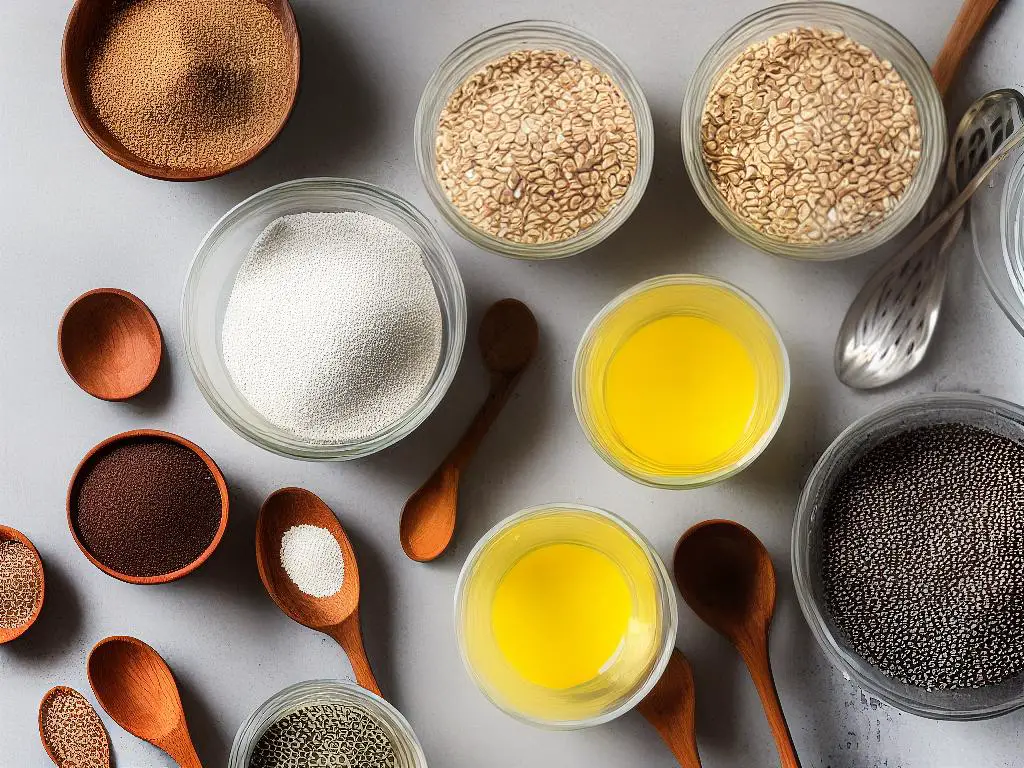
Silken Tofu and Chickpea Flour
Silken tofu and chickpea flour are versatile vegan egg substitutes that can be used in various recipes like quiche, frittatas, and vegan omelettes. Here’s a guide on how to use these ingredients to replace eggs in your favorite dishes:1. Silken TofuSilken tofu, also known as soft or Japanese-style tofu, has a smooth, creamy texture, making it perfect for replacing eggs in recipes that require a soft and moist consistency.How to use silken tofu as an egg substitute:- For every egg required in the recipe, replace it with 1/4 cup (60g) of silken tofu.- Blend the tofu in a food processor or blender until it reaches a smooth and creamy consistency, similar to beaten eggs.- Incorporate the blended tofu into your recipe as you typically would with eggs.Silken Tofu Vegan Quiche Recipe:Ingredients:- 1 14-ounce package silken tofu- 1 cup chopped vegetables of your choice (e.g., onions, bell peppers, spinach, mushrooms)- 1/2 cup non-dairy milk or cream (soy, almond, or coconut milk)- 1 tablespoon nutritional yeast- 1 teaspoon turmeric (for color)- Salt and pepper, to taste- 1 prepared vegan pie crustInstructions:1. Preheat the oven to 350°F (180°C).2. In a blender or food processor, combine silken tofu, non-dairy milk, nutritional yeast, turmeric, salt, and pepper. Blend until smooth and creamy.3. Sauté the chopped vegetables in a pan with a little oil until they are tender.4. Pour the tofu mixture into the prepared pie crust and spread vegetables evenly.5. Bake for 40-45 minutes or until the center is firm and the edges are golden brown.6. Remove from the oven and let it cool for a few minutes before slicing and serving.2. Chickpea FlourChickpea flour, also known as besan or gram flour, is ground from whole chickpeas and can be used to make vegan omelettes, frittatas, and quiches. It has a slightly nutty flavor and provides protein and fiber.How to use chickpea flour as an egg substitute:- For every egg needed in the recipe, use three tablespoons of chickpea flour and mix with three tablespoons of water to create a smooth paste.- Use this mixture as a direct replacement for eggs in savory recipes, such as frittatas and omelettes.Chickpea Flour Vegan Omelette Recipe:Ingredients:- 1 cup chickpea flour- 1 cup water- 1/2 tsp baking powder- Salt and pepper, to taste- 1 cup mixed chopped vegetables (e.g., onions, bell peppers, spinach, tomatoes)- Vegan cheese (optional)- Oil for cookingInstructions:1. In a bowl, whisk together chickpea flour, water, baking powder, salt, and pepper until smooth. Let the mixture sit for a few minutes to thicken.2. Heat a non-stick pan over medium heat and add a little oil.3. Sauté the mixed vegetables until they are tender and set them aside.4. Pour a ladle’s worth of the chickpea flour mixture into the pan and let it cook until the edges are slightly brown and the top appears set.5. Add the sautéed vegetables and vegan cheese (if using) on one half of the omelette.6. Carefully fold the other half over the filled side and let it cook for another minute.7. Slide the omelette out of the pan onto a plate and enjoy. Repeat with the remaining chickpea flour mixture and vegetables.Now that you know how to use silken tofu and chickpea flour as vegan egg substitutes, you can experiment with different recipes and enjoy egg-free dishes like quiche, frittatas, and omelettes.
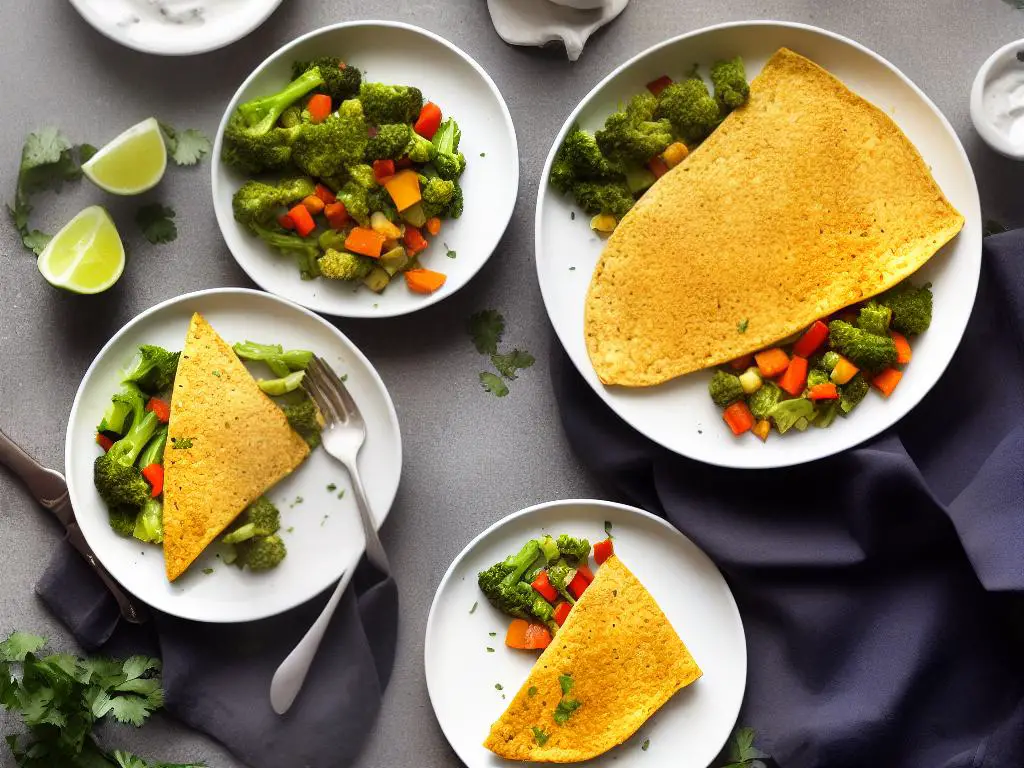
Mashed Bananas and Applesauce
Mashed bananas and applesauce can serve as excellent vegan egg substitutes in various baking recipes, especially in muffins, pancakes, and cakes. Both can add a natural sweetness to your dishes and are great binding agents.
Follow the instructions below to learn how to prepare and use mashed bananas and applesauce as egg replacements.
Mashed Bananas:
- Choose ripe bananas: Ripe bananas are the best for this purpose as they provide optimal sweetness and moisture. Look for bananas that are soft to touch and have brown spots on the peel.
- Mashing the bananas:
- Peel the bananas and break them into smaller pieces.
- Using a fork, potato masher, or even a blender, mash the bananas until they reach a smooth, creamy consistency. A few small lumps are fine, but try to avoid large chunks.
- Measure ¼ cup (approximately 65g) of mashed bananas for each egg you are replacing in the recipe. For instance, if your recipe calls for two eggs, use ½ cup of mashed bananas.
- Adding mashed bananas to the recipe: Replace each egg in the recipe with the appropriate amount of mashed bananas. Mix them into the wet ingredients and proceed with the recipe as usual.
Applesauce:
- Choose unsweetened applesauce: It is best to use unsweetened applesauce as a vegan egg substitute to avoid adding unnecessary sugar to your recipe. You can either buy it from a store or make it at home.
- Homemade applesauce:
- Peel, core, and chop 4-5 apples into small pieces.
- In a saucepan, add the apple pieces along with ½ cup of water.
- Cook the apples on medium heat until they are soft and tender, approximately 20-25 minutes.
- Remove the saucepan from heat and let the apples cool down.
- Use a blender or an immersion blender to blend the apples until they reach a smooth consistency.
- Measure the applesauce: For each egg you want to replace, measure ¼ cup (approximately 60g) applesauce.
- Adding applesauce to the recipe: In place of each egg, add the measured amount of applesauce to your recipe. Mix it into the wet ingredients before combining it with the dry ingredients.
Tips:
- Keep in mind that using mashed bananas or applesauce as egg replacements may slightly change the taste and texture of your baked goods. Bananas add a characteristic flavor, while applesauce can make the final product a bit denser.
- You can also use a combination of mashed bananas and applesauce if you want to achieve a preferable taste and texture to your baked goods.
- For more egg substitution options, consider trying other fruit purees, such as pumpkin or mashed avocado, or vegan yogurt as well.
With a little practice and experimentation, you will become more familiar with using mashed bananas and applesauce as egg replacements in your favorite baking recipes. Enjoy the process and happy baking!
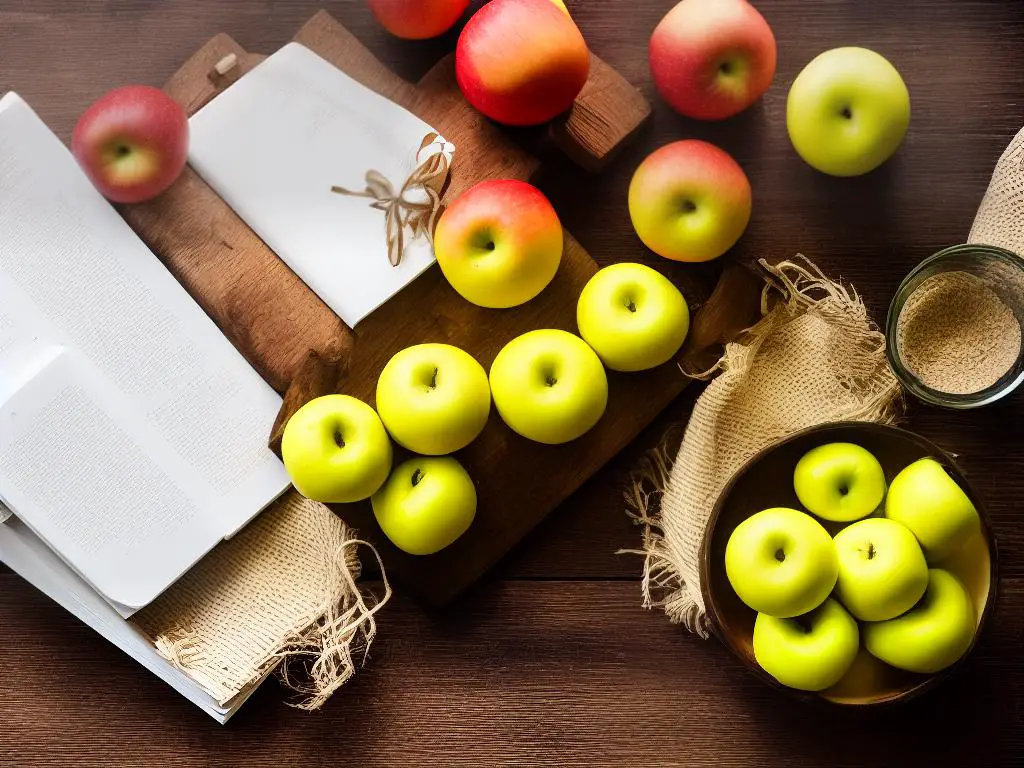
Vinegar and Baking Soda
Discover how vinegar and baking soda can be used as egg substitutes in vegan baking to achieve lift and moisture in cookies, cakes, and other baked goods. This simple and cost-effective solution ensures delicious, cruelty-free treats in no time!- White vinegar or apple cider vinegar
– Baking soda1. Understand the purpose of eggs in baking: In traditional recipes, eggs serve as a binder, provide moisture, and help with leavening, giving baked goods their lift, lightness, and structure. To replicate these effects, you’ll need a combination of vinegar and baking soda.
2. Determine the amount needed: For each egg you’re replacing in your recipe, mix together the following ingredients:
– 1 tablespoon of white vinegar or apple cider vinegar
– 1 teaspoon of baking soda
Note: This proportion is most fitting for recipes with light and fluffy baked goods such as cakes, muffins, and cookies.
3. Prepare the egg substitute: In a small bowl, combine the vinegar and baking soda. The mixture will fizz up as the vinegar reacts with the baking soda, creating bubbles that will help mimic the leavening effect of eggs in your baked goods. Let it sit for about 30 seconds to complete the reaction.
4. Incorporate the egg substitute into your recipe: After the vinegar and baking soda mixture has finished reacting, add it to your batter or dough in place of the egg. Be sure to mix thoroughly to ensure even distribution throughout the batter.
5. Adjust your baking time as needed: Due to the difference in moisture content from using an egg substitute, you may need to slightly increase your baking time. Keep a close eye on your baked goods, and consider using the toothpick test to determine when your treats are fully cooked. If the toothpick comes out clean or with a few crumbs, it’s ready!
6. Enjoy your fluffy, vegan baked goods: Once your treats are out of the oven and cooled, dig in and enjoy knowing that you’ve successfully made vegan baked goods using vinegar and baking soda as egg substitutes!- For denser baked goods, such as brownies or heavier cookies, consider using half the amount of vinegar and baking soda. This will provide some lift and moistness without making the final product too light in texture.
– If you have concerns about the taste of vinegar in your baked goods, use apple cider vinegar for a milder flavor.
– Keep in mind that vinegar and baking soda may not be the ideal egg substitute for all recipes. Some recipes may require additional experimenting with various egg substitutes to achieve the desired outcome.
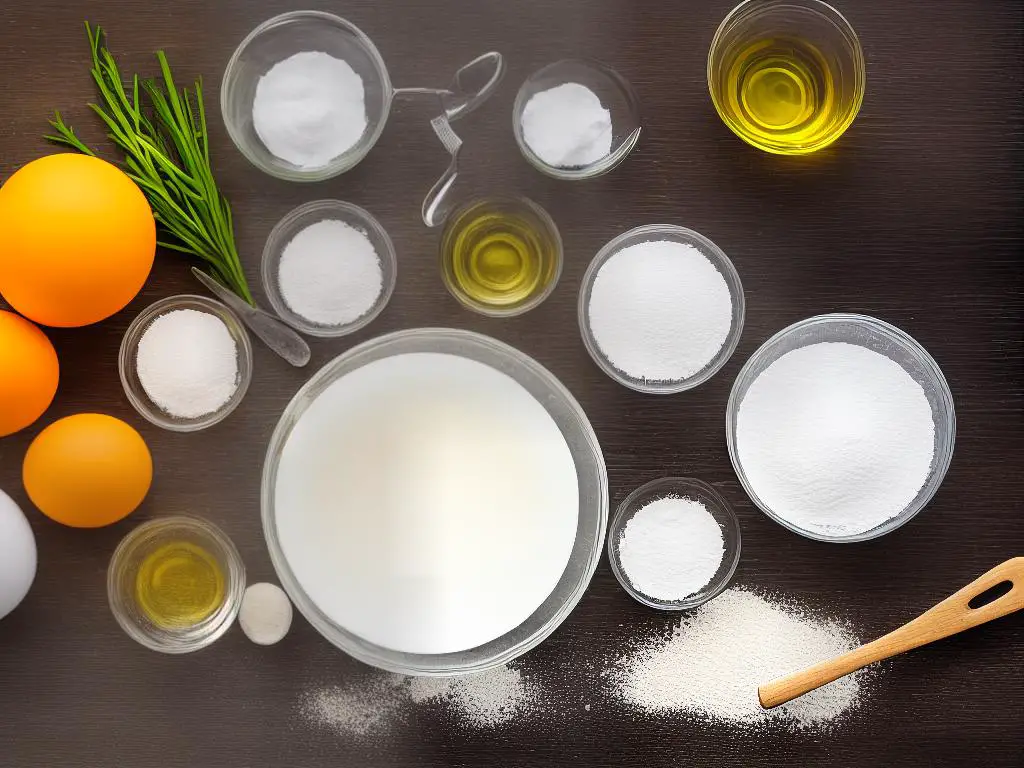
Commercial Vegan Egg Replacers
Types of Commercial Vegan Egg Replacers
- Ener-G Egg Replacer
- Made from potato and tapioca starch with added leavening agents
- Gluten-free and GMO-free
- The Neat Egg
- Made from chia seeds and garbanzo beans
- High in fiber and protein
- Bob’s Red Mill Egg Replacer
- Made from soy flour, wheat gluten, and corn syrup solids
- High in protein and fiber
- Vegg Vegan Egg Yolk
- Made from nutritional yeast, black salt, and organic soy lecithin
- Gluten-free and GMO-free
- Orgran No Egg
- Made from potato and tapioca starch, calcium carbonate, and citric acid
- Gluten-free and GMO-free
Benefits and Drawbacks
- Benefits
- Cholesterol-free
- Lower in saturated fat
- Cruelty-free
- Longer shelf life than eggs
- Suitable for those with egg allergies
- Drawbacks
- May not have the exact same taste, texture, or binding properties as eggs
- Could be more expensive than real eggs
- Not all egg replacers are suitable for every recipe
Using Commercial Vegan Egg Replacers in Recipes
- Baking
- Most egg replacers work well in baked goods such as cakes, cookies, and muffins, adding moisture and acting as a binder
- Make sure to follow product instructions for proper substitution ratios (typically, one tablespoon of egg replacer mixed with 2-3 tablespoons water or plant-based milk equals one egg)
- Cooking
- Vegan egg replacers like Vegg Vegan Egg Yolk can be used in recipes requiring egg yolk, such as custards, puddings, and emulsions like mayonnaise
- For recipes requiring egg whites, consider using aquafaba (the liquid in canned chickpeas) as a substitute for whipping or making meringues
- Scrambles and Omelettes
- Some vegan egg replacers, such as Follow Your Heart’s VeganEgg and JUST Egg, are specifically designed for making scrambles and omelettes
- These products typically require mixing the vegan egg powder with water or plant-based milk, then heating in a non-stick skillet as you would with real eggs
Image Description:
An image of a vegan breakfast plate with scramble tofu replacing egg.
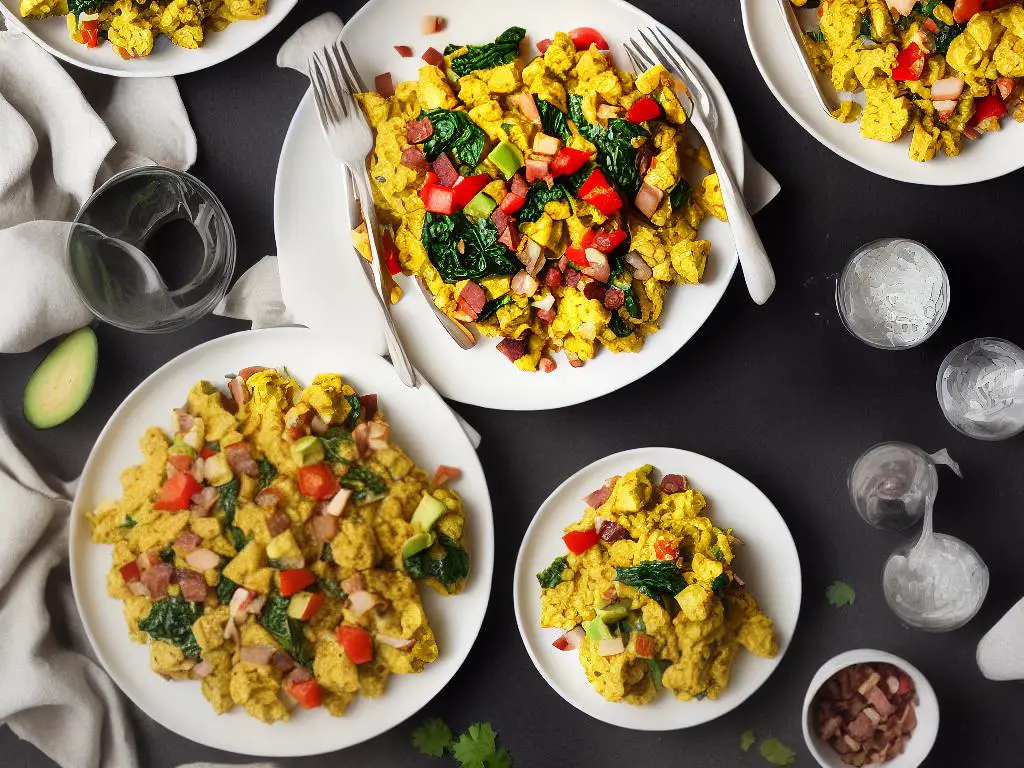
Aquafaba: The Bean Water Wonder
Welcome to the fascinating world of aquafaba, a versatile and incredibly useful vegan egg substitute. This guide aims to help you understand what aquafaba is, how to make it from scratch, and how to incorporate it into your favorite recipes to create egg-free meringues, mousses, and more. Get ready to discover your new favorite kitchen hack!Aquafaba is the liquid remaining after cooking legumes, like chickpeas or white beans. The term “aquafaba” comes from the Latin words for “water” and “bean.” This unassuming liquid can be used as an egg substitute in various recipes, especially in ones requiring egg whites.You can create aquafaba with canned beans or dried, uncooked beans. Chickpeas are the most popular choice, but white beans like navy beans and cannellini can also produce quality aquafaba.If your aquafaba feels too thin, you can further cook it in a saucepan on medium-low heat to help thicken and concentrate its protein content.Aquafaba can be stored in the refrigerator for up to a week in an airtight container. You can also freeze aquafaba in ice cube trays, transferring the frozen cubes to a freezer-safe bag for extended storage.Generally, 3 tablespoons of aquafaba can replace one whole egg in a recipe, while 2 tbsp can replace one egg white.To whip aquafaba, use an electric mixer or a stand mixer with the whisk attachment. Begin mixing on low speed and gradually increase it to high speed.With aquafaba, you now have a fantastic vegan egg substitute for various recipes. It’s not only versatile, but it’s also an economical and sustainable choice that helps you repurpose a common kitchen waste product. So go ahead and get creative with aquafaba, creating fluffy and delicious vegan treats for everyone to enjoy!
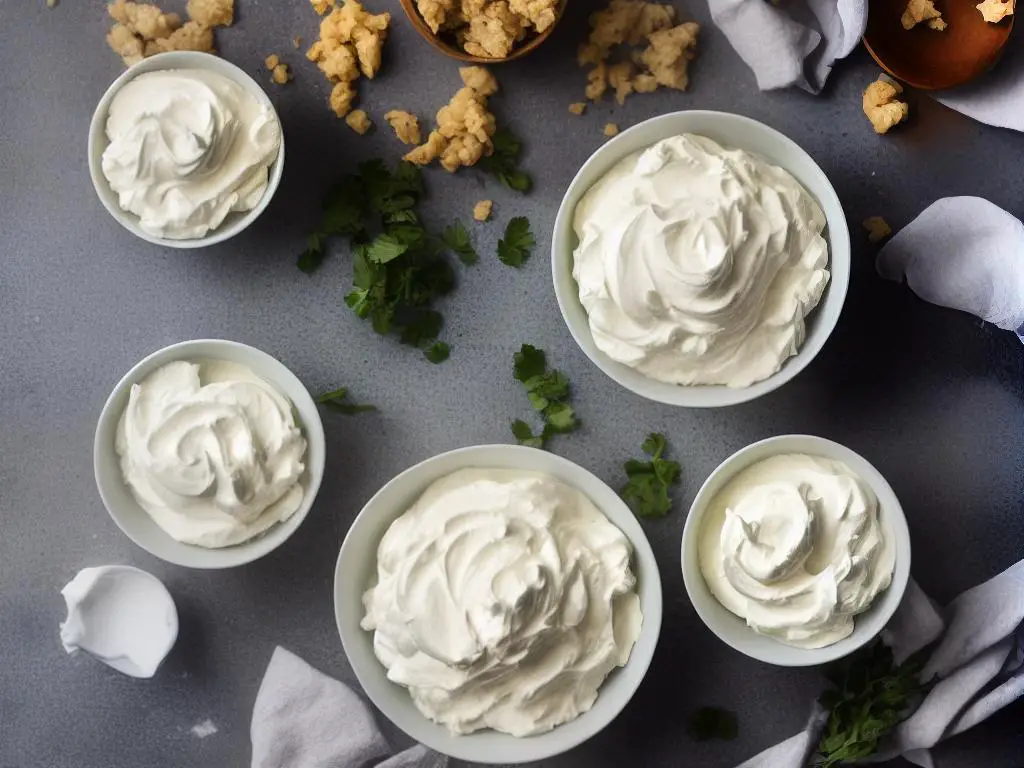
Troubleshooting and Customization
Issue: Baked goods not rising properly or lacking structure.
Solution: If using a vegan egg substitute such as a flax egg or chia egg, it’s essential to make sure the binding properties are still there. One possible solution is to add a bit of extra baking powder to the recipe or use a little apple cider vinegar to help with the rise.Issue: Lack of moisture or cohesiveness in the final product.
Solution: Vegan egg substitutes often have different moisture levels than actual eggs. When using substitutes like mashed bananas or applesauce, you might need to adjust the amount of liquid in your recipe. Start by adding an additional tablespoon of plant-based milk and adjust as needed.Issue: Overpowering flavor from the egg substitute.
Solution: Sometimes, a vegan egg substitute can add an unwanted flavor to the finished dish. If this happens, try using smaller quantities or switch to a more neutral-tasting substitute like silken tofu or aquafaba. Additionally, adjust the seasonings or sweetness in your recipe to balance out any added flavors.Issue: Quiches, frittatas, and scrambles lack the right texture.
Solution: Instead of using a pureed vegan egg substitute like silken tofu on its own, consider adding other ingredients with more texture. Mix in finely chopped and sautéed vegetables or crumbled vegan cheese to make the final result much more satisfying and closer to the original.Issue: Crumbly or dry baked goods.
Solution: Vegan egg substitutes can often result in crumbly or dry finished products. To solve this, try adding a small amount of fat, like coconut oil or vegan butter, to create a more tender and moist product. You might also use ingredients like ground flaxseed or chia seeds that contribute to added moisture and binding properties in the final product.Issue: Running out of vegan egg substitute options.
Solution: Don’t be afraid to experiment with different substitutions in your recipes. There’s a wide variety of vegan egg substitutes available, including blended silken tofu, chickpea flour, psyllium husk, and more. Keep trying new options to figure out which works best for your specific recipe needs.Issue: Difficulty in finding vegan egg substitutes in stores.
Solution: Most vegan egg substitutes can be found in your local grocery store’s baking aisle or health food section. If you can’t find them, consider making your own by grinding flaxseeds, chia seeds, or chickpeas into a fine powder and mixing with water as needed. Additionally, many online retailers and specialty stores carry vegan egg substitutes, making it easy to stock up on your favorites.Finally, don’t be afraid to customize recipes to suit your tastes and preferences. Adjust seasonings or mix and match vegan egg substitutes until you find the perfect combination for your dish. Remember that vegan cooking and baking can sometimes require a bit of trial and error, but with patience and persistence, you’ll be able to perfect your vegan egg substitutes and achieve the desired outcome in your recipes.
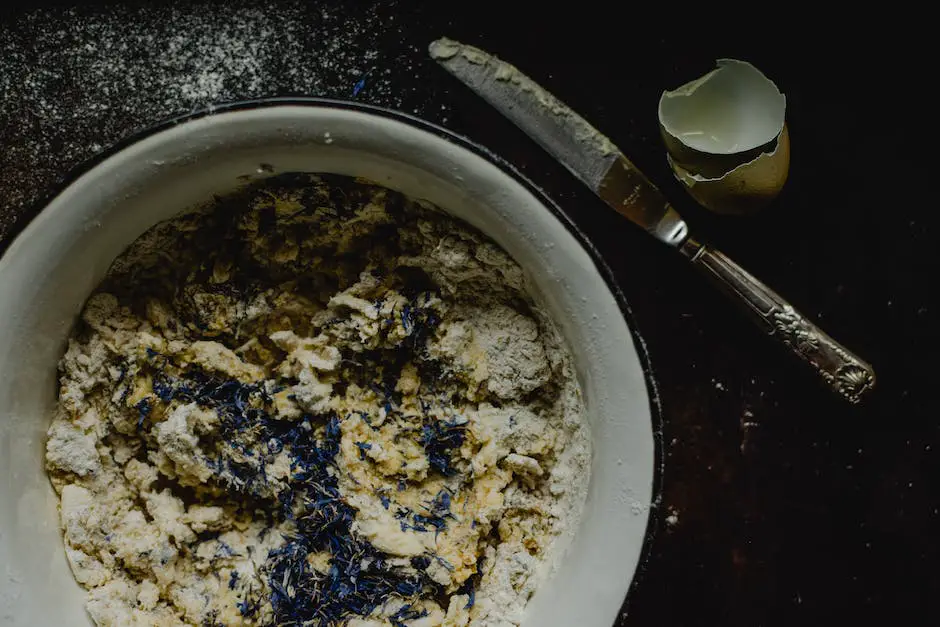
Now that you’re well-versed in the many vegan egg substitutes, it’s time to put that knowledge to the test in your kitchen adventures. By understanding the function of each substitute, you can experiment and customize your recipes to achieve the desired outcome without sacrificing taste or quality. So go ahead, try out these innovative and flavorful alternatives, and impress your friends and family with incredible vegan delicacies!
